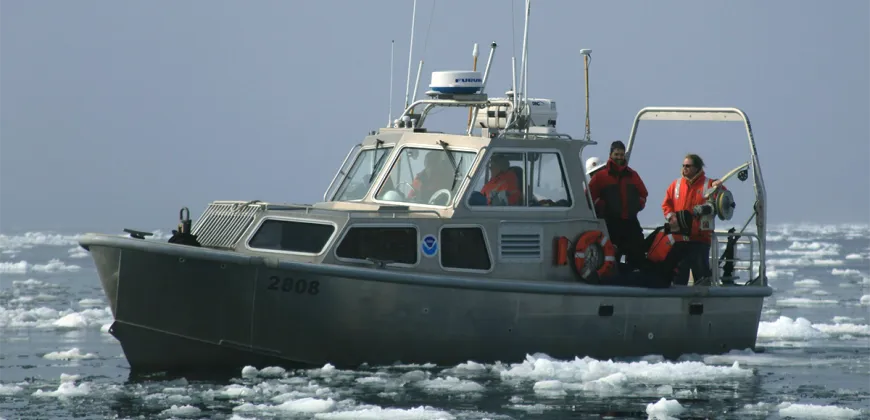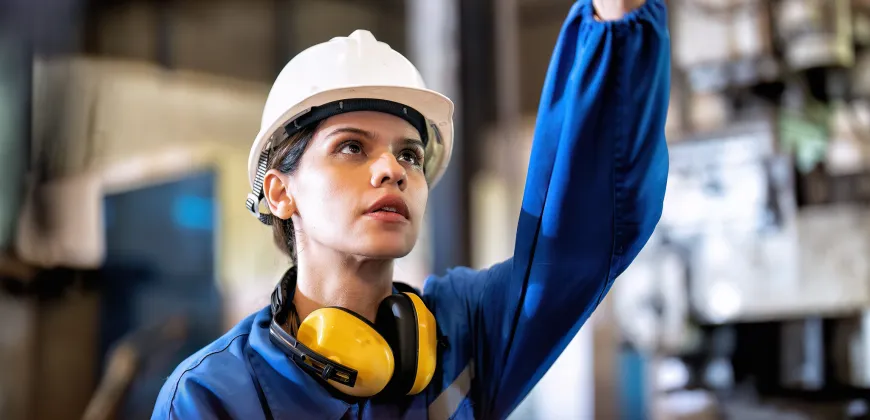Sustainable innovations in marine engineering

In a conversation with MEL in Naval Architecture and Marine Engineering Program Director Dr. Jon Mikkelsen, we talk about the industry's exciting – and ambitious – efforts to decarbonize and how this is creating opportunities for marine engineering leaders to make a difference here in Vancouver and around the world.
Tell us about your research.
I’ve been involved in a range of research projects over the years, all connected by a focus on sustainability.
In one project, for example, I explored ways to improve the energy consumption of fishing boats on the West Coast. This involved investigating hullform modifications to reduce resistance and improve fuel economy, which would ultimately lower emissions.
This work was done in conjunction with the Department of Fisheries and Oceans out of a desire to find ways to reduce the costs of operating fishing boats so that fishers didn’t have to catch as many fish to cover their operating and fuel costs. This also helped maintain healthy fisheries, reduce operating costs and reduce emissions – with the added benefit that the new form was easier and more efficient to manufacture. Another interesting project has been working with First Nations communities to optimize fish wheels so that fish can be caught and them tagged, selectively harvested or returned to the river if they are a threatened species, enabling them to continue their migration upstream.
What changes have you seen in the marine engineering and naval architecture sector over the past few years?
The primary focus is on finding ways to reduce greenhouse gas emissions and create a more sustainable marine shipping industry.
We can improve the energy efficiency of ships through innovations in hull design or propulsion technology. But the big gains will come from finding fuels that can replace traditional bunker fuel on ships.
LNG, ammonia or even perhaps hydrogen down the line are all under consideration, and each offers specific opportunities and technical engineering challenges. All of this is being done in response to the IMO’s mandate for net zero by 2050, and while that sounds far away, 25 years is a very short timeframe given the design and build time – and lifespan – of ships.
As naval architects and marine engineers we need to find ways to create modularity in designs to accommodate future changes, knowing that the vessel will likely be swapping in new engine technology or fuel technology in coming years.
What are some of the opportunities for professionals in this industry?
This is an exciting area. Within the Canadian context, we are well into the National Shipbuilding Strategy to renew the country’s fleet of coast guard, naval and scientific vessels. So there’s a lot happening on the design and build of new ships – the order books are very full. Global trade is not slowing down and there are many opportunities there. And of course, the sector is not just large ships – there are ferries and a vast array of pleasure craft and fishing vessels that need building and maintaining.
We also see a lot of opportunities down the supply chain and into smaller subsectors.
Many of these opportunities line up with the sustainability theme – for example, Vancouver naval architect firm Robert Allan (which employs numerous graduates from UBC) recently designed electric battery-powered tugboats that will be used in Kitimat to provide towing services to LNG carriers.
How does the NAME curriculum equip students to be leaders in this field?
As evidenced by the students we attract and the trajectory of our graduates, we’ve created a very successful program.
The MEL in Naval Architecture and Marine Engineering provides opportunities for people who are already working in the sector who want to upskill to some of the newer technologies while also gaining in-demand business knowledge.
Our students have a median of eight years of experience when they come to our program. They know what it’s like to work in this sector and many have extensive seagoing experience.
They’re ready to move into new kinds of leadership positions, and this master’s degree enables them to integrate their past experience with new knowledge, giving them a strong advantage as they move into leadership roles.
Our graduates bridge many different areas within the sector – they are as comfortable talking with the folks on the ships and the people involved in building them as they are with those involved on the project management and business development side.
The MEL provides a much-needed breadth of technical and leadership knowledge, pushing people a little beyond their comfort zone and setting them up well for success.
Where do graduates of the MEL in Naval Architecture and Marine Engineering end up?
Our graduates do very well, getting hired into shipbuilding companies like Seaspan at their Vancouver Shipyards, working for authorities like the Port of Vancouver, and securing positions with employers both local and farther afield.
They are sought out by employers who are looking for people with real-world experience who also have leadership and management skills.
There are also opportunities beyond being employed by large organizations. For example, one of our graduates from 2023, Vipin Balachandran, is launching a company to develop AI-enabled software that will support the industry’s transition.
Our students have a passion for the sea and love of the profession. It’s been exciting to see them chart new professional directions and to see the impact they are making on the industry.






